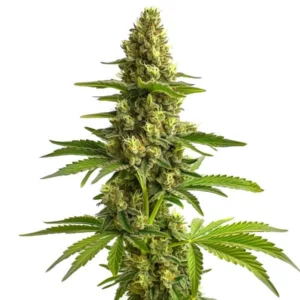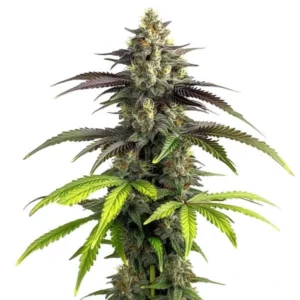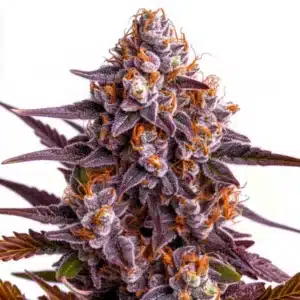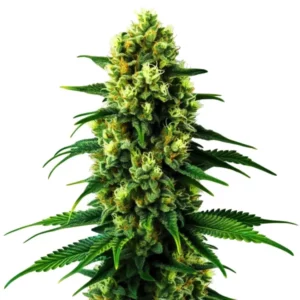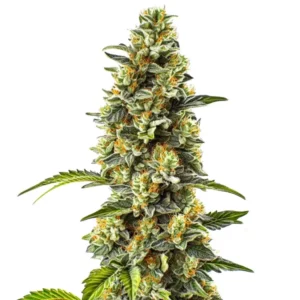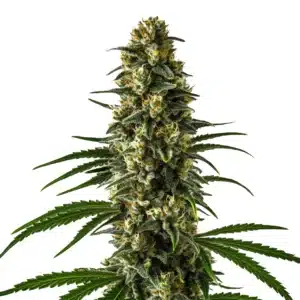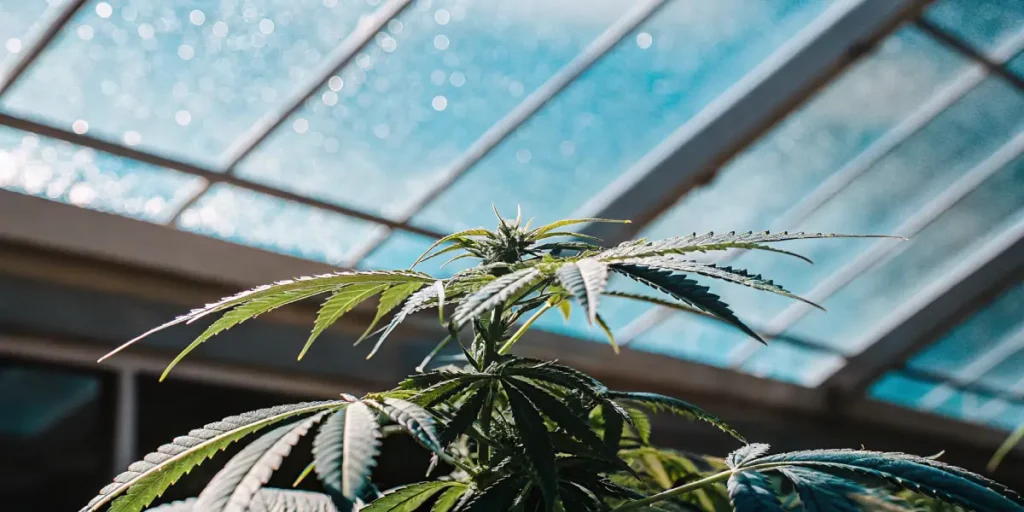
How to Improve Turgor Pressure in Cannabis
Growing healthy cannabis plants requires more than just sunlight and soil. An essential aspect of plant health is turgor pressure. This pressure keeps your plants firm and upright. It’s like the water pressure in a balloon. If the pressure drops, your plant starts to wilt. Boosting turgor pressure in cannabis plants can enhance their growth and yield.
Water plays a crucial role in this. When a plant cell is full of water, it stands firm. But, if it loses water, the cell becomes floppy. Therefore, optimizing water uptake for cannabis turgor is vital. This doesn’t mean drowning your plants but finding that perfect balance to keep them healthy.
Recommended Strains
Bruce Banner #3
-
THC: 20% - 29%
-
Type of seed: Feminized
-
Phenotype: 50% Sativa / 50% Indica
-
Flavor: Earthy, Fruity, Sweet
-
Day to flower: 8 - 10 weeks
Bruce Banner 2.0
-
THC: 25% - 30%
-
Type of seed: Feminized
-
Phenotype: 65% Sativa / 35% Indica
-
Flavor: Citrus, Diesel
-
Day to flower: 8 - 10 weeks
When you’re trying to improve turgor pressure in cannabis, it’s helpful to know about strains that thrive under these conditions. The Bruce Banner 3 strain from Blimburn Seeds, known for its resilience, can be a good candidate. It responds well to optimal water levels, making it a favorite for both beginners and experienced growers.
Water Management
Managing water is the first step to increase cannabis plant cell pressure. Too much water, and you risk root rot. Too little, and your plants won’t stand tall. It’s essential to water your plants deeply and then allow the soil to dry out slightly before the next watering.
Using a drip irrigation system can be an effective way to control water delivery. This system provides consistent moisture without overwatering. Regularly checking soil moisture levels can prevent common issues. The proper water balance will naturally improve turgor pressure in cannabis plants.
Another effective water management strategy is to adjust watering frequency based on environmental factors like temperature and humidity. In hotter climates, plants may require more frequent watering to maintain optimal turgor pressure. Conversely, in cooler and more humid conditions, reducing watering frequency can prevent overwatering and root rot.
Incorporating rainwater harvesting into your water management plan can also be beneficial. Rainwater is naturally soft and free of salts and chemicals found in tap water. Using rainwater can promote healthy root systems and boost turgor pressure in cannabis plants, resulting in robust and resilient growth.
Promos & Deals
Nutrient Balance
Nutrients are another key factor. Plants need a balanced diet to thrive. Essential nutrients include nitrogen, phosphorus, and potassium. These nutrients aid in various plant functions, including water uptake, which is crucial for maintaining turgor pressure.
Calcium and magnesium also play a role in enhancing cannabis leaf firmness. These elements strengthen cell walls, helping plants maintain their structure. A good nutrient mix can be found in pre-made soil or as an additive to your watering schedule. Adjusting nutrient levels based on plant growth stages will boost turgor pressure in cannabis plants.
Applying organic fertilizers can further enhance nutrient balance, providing a slow and steady release of essential elements. Organic fertilizers improve soil health and structure, promoting better root development and nutrient uptake. This ultimately helps increase cannabis plant cell pressure and enhances overall vitality.
Foliar feeding is another technique that can complement soil nutrient management. By applying nutrients directly to the leaves, plants can absorb essential elements quickly, especially during periods of stress. This method can help improve turgor pressure cannabis naturally by addressing nutrient deficiencies promptly.
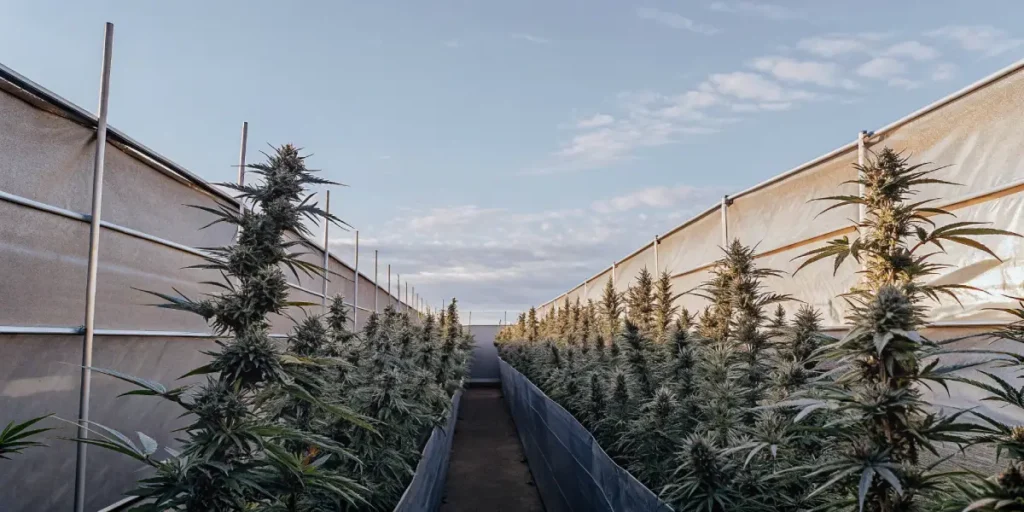
Strain Selection
Choosing the right cannabis strain can make a significant difference. Some strains are naturally better at handling water stress and nutrient fluctuations. For example, the Girl Scout Cookies strain from Blimburn Seeds is known for its adaptability and robust growth.
These strains often have thicker leaves and stronger stems, which can help improve turgor pressure. They are less prone to wilting and can handle varying environmental conditions better. Selecting a strain that matches your growing environment is key to achieving the best results.
Exploring landrace strains can provide insights into plants that have naturally adapted to specific climates. These strains may have developed unique characteristics that allow them to thrive under challenging conditions, thus maintaining optimal turgor pressure.
Hybrid strains, bred for resilience and yield, can offer a balance of desirable traits. These strains often display enhanced vigor, making them ideal for growers looking to boost turgor pressure in cannabis plants while achieving high yields and quality produce.
Practical Tips
Simple practices can make a big difference. Mulching around your plants can help retain soil moisture. This can prevent evaporation and keep roots cool. It’s a natural way to enhance cannabis leaf firmness and reduce water stress.
Regularly inspect your plants for signs of stress. Leaves wilting, yellowing, or curling can indicate turgor pressure issues. Adjusting your watering or nutrient strategy can often resolve these problems quickly. It’s all about being attentive and responsive to your plants’ needs.
Implementing companion planting can also support cannabis growth by enhancing soil health and deterring pests. Plants like clover or basil can improve soil structure and maintain moisture levels, indirectly helping to improve turgor pressure in cannabis.
Using shade cloths during periods of intense sunlight can protect plants from excessive heat and light stress. This simple measure helps maintain a stable environment, optimizing water uptake for cannabis turgor and ensuring steady growth.
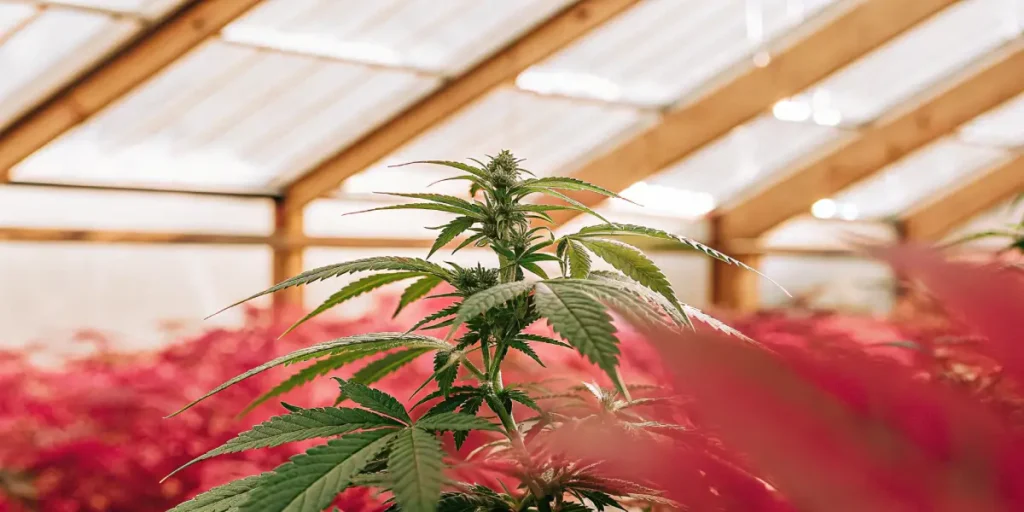
FAQs
What causes low turgor pressure in cannabis plants?
Low turgor pressure is often due to inadequate water supply. When plants don’t get enough water, their cells lack the pressure needed to stay firm. This can lead to wilting and poor growth. Checking soil moisture regularly can help prevent this issue.
Nutrient imbalances can also contribute. Without the right nutrients, plants cannot effectively absorb water. This can cause cells to lose pressure. Ensuring a balanced nutrient mix can help maintain healthy turgor pressure in cannabis plants.
Poor soil structure can also impact turgor pressure. Compacted or heavy soils can restrict root growth and water movement, leading to reduced uptake and lower cell pressure. Improving soil aeration and drainage can help address this issue.
Environmental stressors such as wind or pest infestations can exacerbate low turgor pressure. Protecting plants with windbreaks or regular pest control can minimize these stressors, allowing plants to maintain firmness and vigor.
How does temperature affect turgor pressure in cannabis?
Temperature plays a significant role in plant health. High temperatures can increase evaporation, leading to water loss and reduced turgor pressure. Conversely, low temperatures can slow down metabolism, affecting water uptake.
Maintaining a stable temperature range helps keep these processes in balance. Using fans or heaters as needed can help regulate the environment. This balance is crucial for optimizing water uptake for cannabis turgor.
Temperature fluctuations can also stress plants, impacting their ability to maintain turgor pressure. Rapid changes in temperature can shock plant systems, leading to wilting or stunted growth. Gradual adjustments help plants acclimate better, preserving their internal pressure.
Implementing thermal mass materials like rocks or water barrels in grow spaces can moderate temperature swings. These materials absorb heat during the day and release it at night, creating a more consistent environment for cannabis plants.
Can overwatering affect turgor pressure?
Yes, overwatering is a common mistake that can harm turgor pressure. It can lead to root rot, where roots cannot absorb water properly. This results in reduced pressure in plant cells, causing wilting.
Allowing the soil to dry out between waterings can prevent this issue. It’s important to find a watering schedule that fits your plant’s needs. Consistent monitoring can prevent overwatering and its negative effects.
Besides to root rot, overwatering can lead to nutrient leaching, where essential nutrients are washed away from the root zone. This can exacerbate turgor pressure issues, as plants struggle to access the nutrients necessary for healthy growth.
Installing moisture meters can aid in preventing overwatering by providing accurate soil moisture readings. This tool helps in making informed decisions about when to water, ensuring plants receive the right amount of moisture to maintain firmness.
What nutrients are essential for improving turgor pressure?
Key nutrients like nitrogen, phosphorus, and potassium are vital. They support various plant functions, including water transport. These nutrients help maintain cell pressure and overall plant health.
Calcium and magnesium are also important. They strengthen cell walls and improve water retention. Ensuring your plants receive a balanced nutrient mix can enhance cannabis leaf firmness and boost turgor pressure.
Micronutrients such as iron, manganese, and zinc, though needed in smaller quantities, are also crucial. These elements play vital roles in enzyme function and photosynthesis, indirectly supporting water uptake and turgor maintenance.
Regular soil testing can help identify nutrient deficiencies, allowing for precise amendments. Tailoring nutrient applications based on test results ensures plants receive an optimal mix, promoting robust turgor pressure and overall vitality.
Are there any natural methods to improve turgor pressure?
Yes, several natural methods can help. Mulching is one way to retain moisture in the soil. This reduces evaporation and keeps roots hydrated. It’s an effective way to improve turgor pressure in cannabis naturally.
Using compost can also benefit your plants. Compost improves soil structure and nutrient content. This enhances water retention and provides a steady nutrient supply. Both methods can lead to healthier, more resilient plants.
Incorporating mycorrhizal fungi into the soil can enhance root health and water uptake. These beneficial fungi form symbiotic relationships with plant roots, improving nutrient absorption and supporting strong turgor pressure.
Practicing crop rotation and cover cropping can also naturally improve soil health. These practices enrich the soil with organic matter and prevent nutrient depletion, helping to maintain optimal conditions for healthy cannabis growth.

